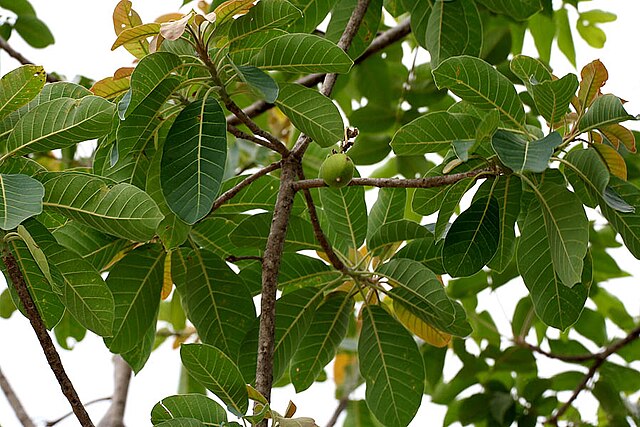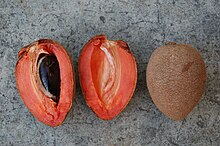Sapotaceae
Sapotaceae
Family of flowering plants
The Sapotaceae are a family of flowering plants belonging to the order Ericales. The family includes about 800 species of evergreen trees and shrubs in around 65 genera (35–75, depending on generic definition). Their distribution is pantropical.
This article needs additional citations for verification. (April 2013) |

Many species produce edible fruits, or white blood-sap that is used to cleanse dirt, organically and manually, while others have other economic uses. Species noted for their edible fruits include Manilkara (sapodilla), Chrysophyllum cainito (star-apple or golden leaf tree), Gambeya africana and Gambeya albida (star-apple), and Pouteria (abiu, canistel, lúcuma, mamey sapote). Vitellaria paradoxa (shi in several languages of West Africa and karité in French; also anglicized as shea) is also the source of an oil-rich nut, the source of edible shea butter, which is the major lipid source for many African ethnic groups and is also used in traditional and Western cosmetics and medications. The "miracle fruit" Synsepalum dulcificum is also placed in the Sapotaceae.
Trees of the genus Palaquium (gutta-percha) produce an important latex with a wide variety of uses. The seeds of the tree Argania spinosa produce an edible oil, traditionally harvested in Morocco.
The family name is derived from zapote, a Mexican vernacular name for one of the plants (in turn derived from the Nahuatl tzapotl) and Latinised by Linnaeus as sapota, a name now treated as a synonym of Manilkara (also formerly known by the invalid name Achras).

